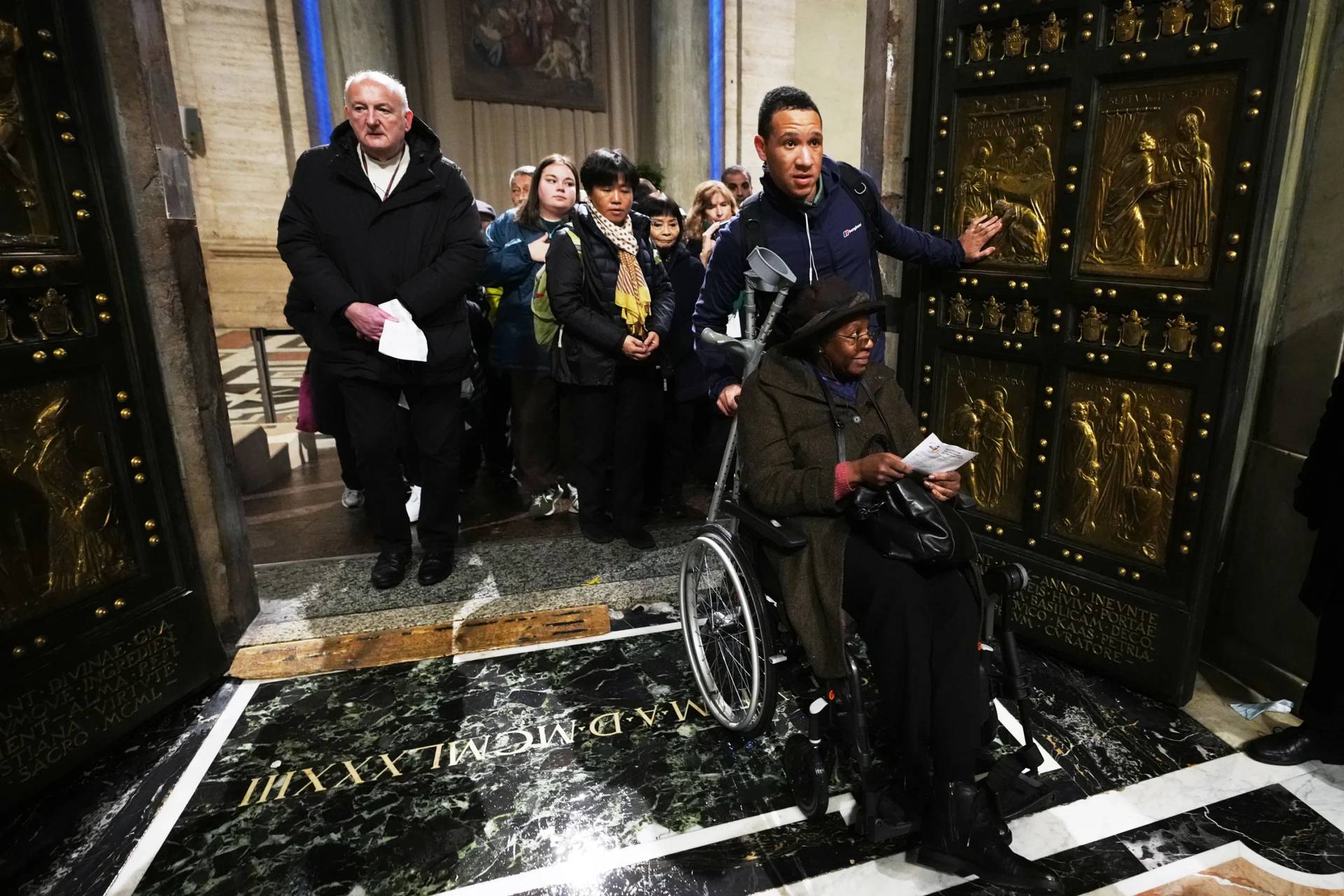SOUTH BEND – A Notre Dame panel concluded Friday that asking whether Pope Francis’s rhetoric on clerical abuse is always matched by his actions is “legitimate,” including in the case of his fellow Argentine, Archbishop Gustavo Zanchetta.
Though this point was not necessarily at the center of a discussion titled “Dignity in the Dock” at Notre Dame’s Fall Conference organized by the De Nicola Center for Ethics and Culture, the evolution of both Pope Francis and his predecessor’s policies on clerical sexual abuse dominated the Q&A session.
On the panel were Thomas Donnelly of Loyola University, and an associate Judge of the Circuit Court of Cook County; Father Javier del Castillo, Midwest Vicar of Opus Dei; and Father Jordi Pujol of Rome’s Pontifical Holy Cross University. The event was moderated by Father John Paul Kimes of UND.
The panel was asked about Zanchetta, one of Francis’s first episcopal appointments, assigned to the diocese of Oran in northern Argentina in July 2013. Four years later, the pontiff accepted Zanchetta’s resignation, allegedly for health reasons.
Four months later, in Dec. 2017, Zanchetta was appointed as a high-ranking official of the Administration of the Patrimony of the Apostolic See (APSA), an office that administers Vatican real estate and investments. A year later, he was suspended pending investigation after allegations arose of having behaved improperly with seminarians while in Oran.
Yet a few months later he was back at his desk, attending the Vatican’s Lenten retreat with Pope Francis and other members of the Roman Curia and living in the Santa Marta residence, where the pope resides. He’s currently awaiting trial in Argentina, and it wasn’t until earlier this year that he left his position at APSA.
“It’s a very legitimate question,” Kimes said. “I also think that it’s fair to note that Pope Francis’ learning curve on this issue was very slow during the first years of his pontificate and has ramped up in the latter years. The actions that we see from Pope Francis up to 2018 are very different to what we’ve seen in the past three years.”
Pujol delved into that attitude change, saying that it began after Francis came back from his January 2018 trip to Chile and Peru, noting that during the trip and even shortly afterwards, Francis stood behind his decision to appoint Bishop Juan Barros to the southern diocese of Osorno.
Barros is one of four Chilean bishops mentored by late Fernando Karadima, arguably the country’s most infamous abusive priest, who died soon after being removed from the priesthood by Francis. He’d been sanctioned to a life of penitence and prayer in 2011, after being found guilty of abuse.
“[Francis] accused abuse victims of being liars,” Pujol said. “But when he returned from Chile, once in Rome, he saw the aerial pictures of his visit, and realized that something was going on, because there was no one there.”
As the priest explained, Francis sent a team to Chile to investigate and met with Karadima’s victims in Rome, spending hours with each of them, and publicly apologized for having been “part of the problem.”
“It was then that he had his conversion,” Pujol said. “It’s probable that, like many bishops, he used to think that survivors were looking for money, because the idea that survivors should be able to forget what had been done to them and rebuild their lives was widespread.”
During his meetings with three Chilean survivors “he realized that it takes more,” the priest said. “It’s interesting that he has rectified what he’s said, because his defense of Barros is [still] available in YouTube.”
Pujol’s remarks during the panel centered on reframing the crime of sex abuse as an offence against human dignity.
“I also think there’s a moment in every pope’s life when he stops being the man he was and starts being the pope he’s called to be,” said Kimes. “I think Francis’ moment came a bit late in his pontificate. In Benedict’s case, he had his Regensburg moment, when Joseph Ratzinger steps aside and Benedict XVI steps forward.”
Asked about Benedict’s turning point on the abuse crisis, Kimes said, “I personally believe a 1988 letter Ratzinger wrote to the President of the Pontifical Commission for Legislative Texts, the more I reflect on it, I find that he intuited then what he would then rectify as pope.”
(That letter requested a more rapid and simpler process under church law to impose penalties on priests, saying that Ratzinger’s Congregation for the Doctrine of the Faith was aware of priests “guilty of grave and scandalous conduct” who went unpunished because bishops found the system cumbersome and confusing.)
Kimes said then-Cardinal Ratzinger often noted that although the revised Code of Canon Law went into effect in 1983, it was often not used or under-used.
Then in 2001, Sacramentorum sanctitatis tutela was promulgated by John Paul II. Among other things, this motu proprio defined “serious offenses against morals”, and spelled out the circumstances under which bishops were obliged to turn allegations over to Rome.
“It’s very clear that [Ratzinger] was involved in the drafting of the motu proprio,” Kimes said. “However, it’s less than a year after it was promulgated that the first modifications are made. Ratzinger immediately goes to John Paul II and tells him that things have to change because it wasn’t working. And he did so again in 2003 and 2004.”
“I’m inclined to believe that Benedict’s moment came as Ratzinger, in the CDF, when, in 2002-2004, there was an avalanche of allegations that flooded the CDF,” Kimes said. “He realized the inadequacies of the law and sought to rectify them.”
Follow Inés San Martín on Twitter: @inesanma














